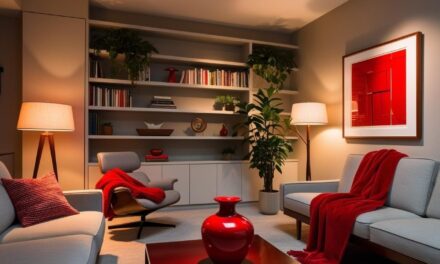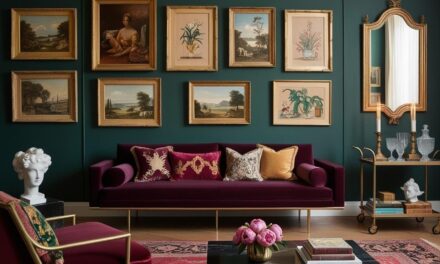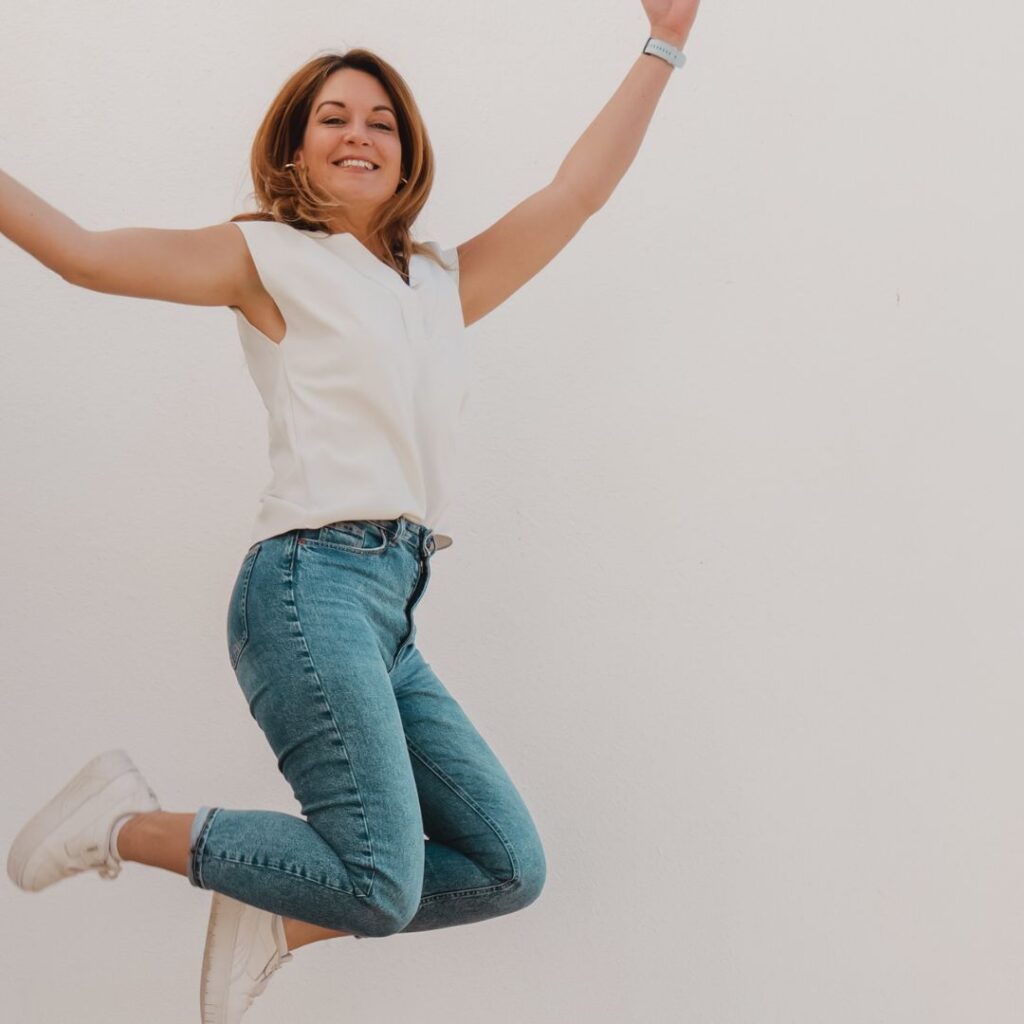Dopamine Core vs Maximalism: Which Design Style Is For You?
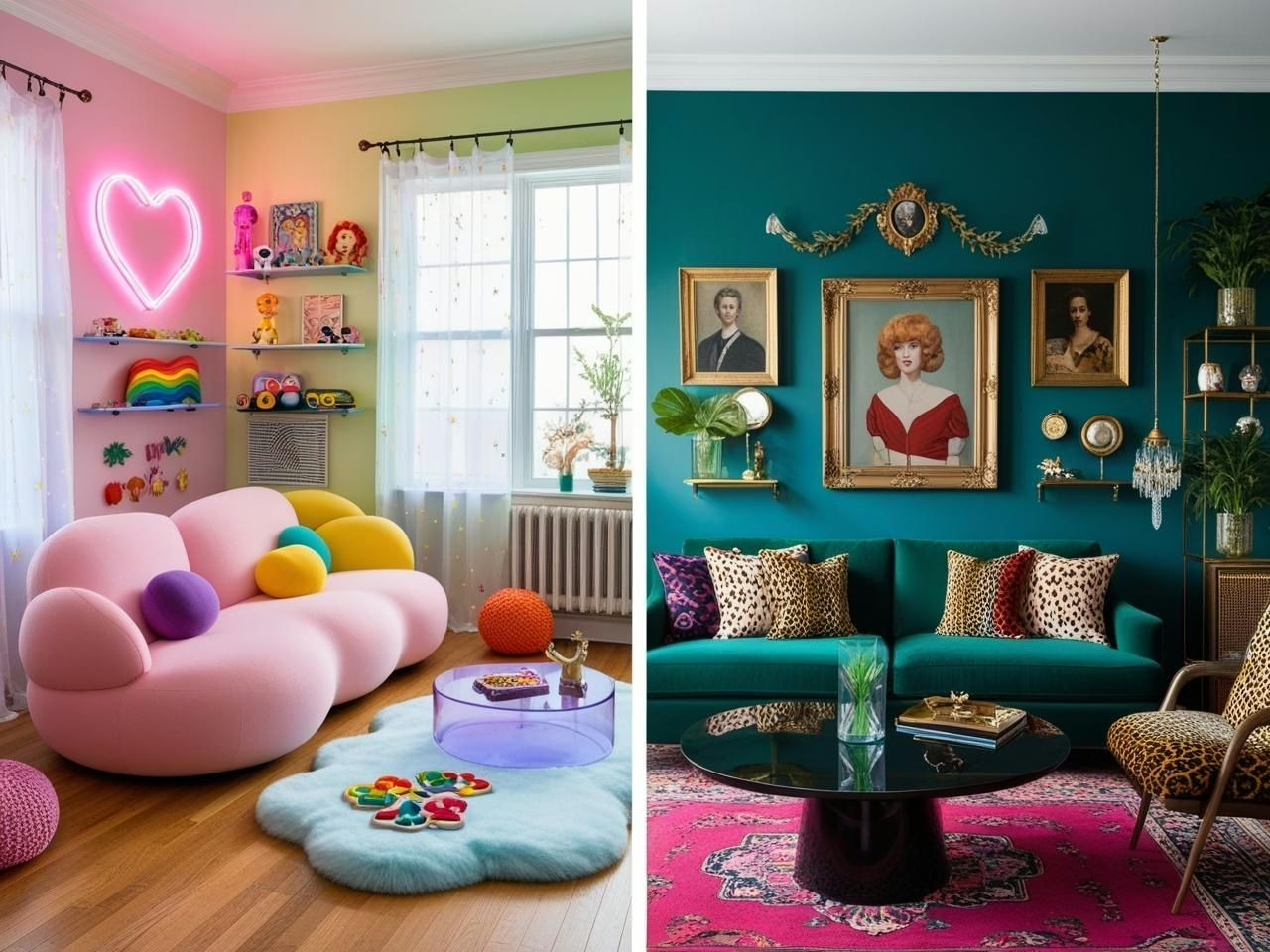
Let’s talk about the real psychological warfare happening in your living room right now. That throw pillow arrangement isn’t just decor—it’s a full-on battle for your mental wellbeing.
In one corner, we have dopamine core design: the intentional mood-boosting approach that’s like therapy, but for your walls. In the other corner, maximalism: the “more is more” philosophy that treats restraint like a four-letter word.
Both styles claim to make you happier at home, but they’re taking wildly different routes to get there. Dopamine core is carefully selecting the perfect yellow that science says will boost your mood, while maximalism is throwing every color at you simultaneously and seeing what sticks.
The truth? Your personal brain chemistry probably leans toward one approach or the other. Maybe you’re the kind of person who feels genuinely calmer when surrounded by carefully curated objects in scientifically-backed mood-enhancing colors. Or perhaps your serotonin spikes when you’re surrounded by a glorious riot of patterns, textures, and objects that tell your unique story.
This isn’t just about aesthetics—it’s about how your physical environment literally rewires your neurological responses. That’s not just design; that’s mental healthcare disguised as decorating advice.
So before you start painting accent walls or hunting for that statement chandelier, let’s explore which approach might actually work with your particular flavor of brain chemistry. Because the most Instagram-worthy space in the world isn’t worth much if it makes you feel anxious, bored, or just plain wrong when you’re actually living in it.
Ready to figure out whether you’re wired for dopamine core calm or maximalist stimulation? Let’s jump in—your mental wellbeing (and your credit card) will thank you.
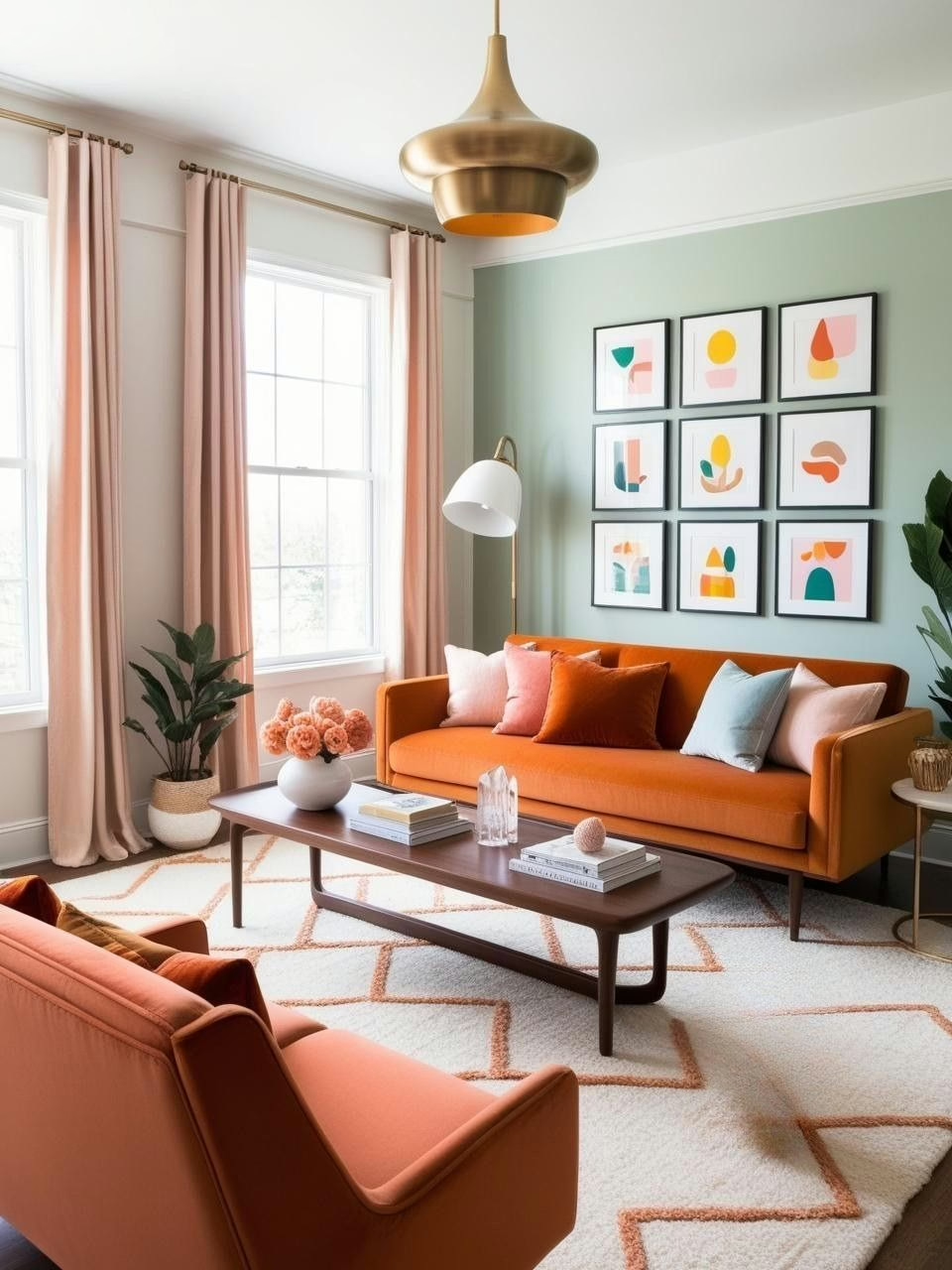
What is Dopamine Core Design?
Let’s be honest – your home isn’t just a collection of furniture and pretty things. It’s basically a giant mood ring reflecting how you feel and, more importantly, influencing your emotional state. Enter dopamine core design: the interior style equivalent of that friend who always brings snacks to the party and remembers your birthday without Facebook reminders.
The Science Behind the Style (No Lab Coat Required)
Dopamine core isn’t just another cutesy design term I made up after three glasses of rosé. It’s rooted in actual brain chemistry – specifically how certain colors, textures, and elements trigger that delicious dopamine release that makes you feel like you just found $20 in your winter coat pocket.
Those vibrant yellows, energetic oranges, and refreshing turquoises aren’t just pretty – they’re practically medicinal. Your brain sees that mustard yellow throw pillow and says, “Yes, please, more of THAT feeling!” It’s like therapy, but without the hourly rate.
What Actually Makes It “Dopamine Core”
Unlike maximalism (which we’ll get to later), dopamine core isn’t about throwing every color at the wall to see what sticks. It’s intentional joy-seeking through design. Think of it as curated happiness rather than chaotic stimulation.
The essential elements include:
- Strategic color use: Not just bright colors everywhere, but purposeful pops in a balanced palette – like that one friend who knows exactly when to drop the perfect one-liner
- Textural variety that makes sense: Mixing plush with smooth, rough with polished – giving your fingers and eyes something interesting to experience (beyond scrolling on your phone)
- Personal touches with actual meaning: Not the generic “Live, Laugh, Love” sign, but the ceramic mug your friend made or the print from that trip where everything went wrong but you still had fun
- Natural elements that ground the space: Plants that haven’t given up on life, wood that actually looks like it came from a tree, materials that remind you the outdoors exists
The “Oh, I See It Now” Moment
Picture this: You walk into a room with warm white walls (not that clinical white that makes you feel like you’re waiting for a root canal). There’s a cozy couch in a soft neutral, but it’s adorned with pillows in that perfect shade of sunshine yellow. A handwoven throw in terracotta adds texture. Plants of various heights create rhythm around the room. The coffee table displays three objects you genuinely love instead of seventeen decorative objects that mean absolutely nothing.
The room isn’t screaming for attention, but it’s quietly, confidently making you feel good. That’s the dopamine core sweet spot.
Why It’s Not Just Another Trend
Let’s face it – most design trends have the lifespan of a mayfly. Remember chevron? Exactly. But dopamine core design isn’t about chasing the latest “it” pattern. It’s about understanding that your environment affects your mental state, which is pretty timeless knowledge (just ask anyone who’s tried to work in a cluttered, dark room).
The beauty is that dopamine core can adapt to your personal style without losing its mood-boosting powers. You can integrate these principles whether you’re into mid-century modern, scandinavian minimalism, or whatever style speaks to your soul – as long as you prioritize the elements that genuinely make you feel good.
And unlike some design approaches that require emptying your bank account for a complete overhaul, dopamine core design can start small: a plant here, a meaningful art piece there, a strategic color addition somewhere else. It’s accessible happiness, not exclusive joy.
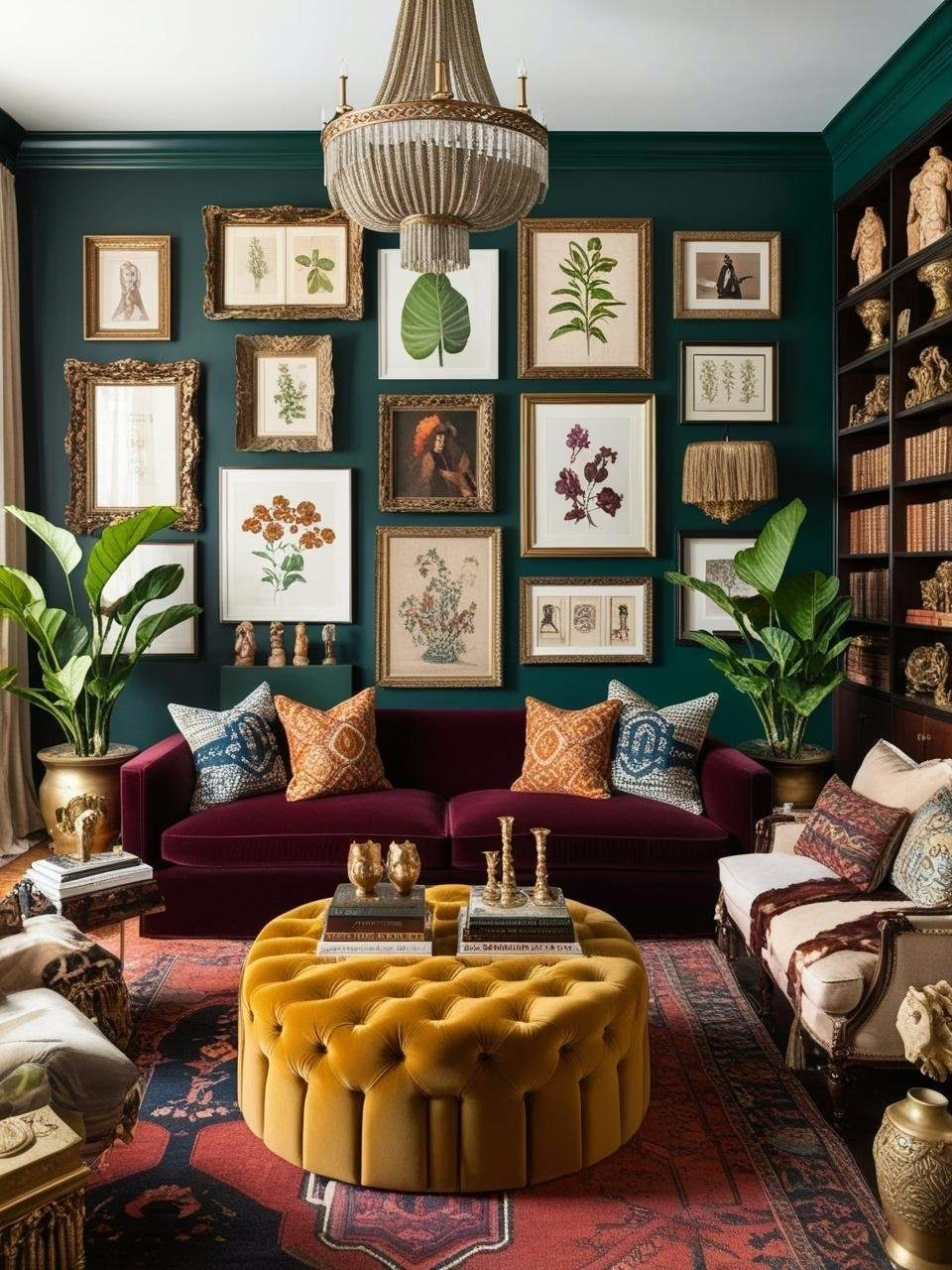
What is Maximalism?
Let’s talk about maximalism – the design equivalent of someone who orders “one of everything” at a restaurant and somehow pulls it off with total confidence. If minimalism is Marie Kondo politely suggesting you thank your belongings before showing them the door, maximalism is your eccentric aunt who insists every trinket from her world travels has a story worth telling (and displaying prominently on every available surface).
More is More (And Then Some More)
Forget everything you learned about restraint. Maximalism gleefully throws design rules out the window, then decorates that window with patterned curtains, a stained glass overlay, and probably a macramé plant hanger supporting a trailing pothos plant named Gertrude.
At its heart, maximalism celebrates abundance. It’s the design approach that asks, “Why have one pattern when you could have seven competing for attention?” It’s the perfect style for people who get hives at the thought of empty wall space or anyone who’s ever been described as “having a lot of personality.”
What Happens When Your Decor Refuses to Use Its Inside Voice
The core of maximalism isn’t just random chaos (though it might look that way to the untrained eye). It’s a deliberate layering of elements that somehow create harmony through their very dissonance. Think of it as a jazz improvisation for your living room – notes that shouldn’t work together but somehow create something brilliant.
This style brings together:
- Colors that would never swipe right on each other in a design dating app: Deep emeralds sitting comfortably next to burnt oranges and electric blues, creating visual conversations that never get boring
- Patterns that are definitely not social distancing: Florals, geometrics, animal prints all mingling at the same party without a hint of awkwardness
- Textures having an ongoing relationship: Velvet, leather, rattan, silk, metal – all coexisting in tactile harmony
- Objects with absolutely nothing in common except your love for them: Your grandmother’s antique mirror hanging above a brutalist concrete side table holding a collection of vintage ceramic cats
The “Rules” of Maximalism (Yes, There Actually Are Some)
The beautiful irony of maximalism is that even this seemingly ruleless approach has principles that separate the magnificent from the mess. It’s controlled chaos, people – an important distinction that keeps your home from looking like a thrift store exploded inside it.
The Curator vs. The Hoarder Distinction
Maximalism isn’t about drowning in stuff. It’s about curating collections with intention. Your 27 vintage teacups deserve display space because they tell a story about your passion, not because you couldn’t be bothered to decide which ones you actually like.
Color Theory on Steroids
While maximalism embraces bold color combinations, they’re rarely random. There’s usually a method to the chromatic madness – whether it’s complementary colors, a shared undertone, or repetition of key hues throughout a space to create cohesion amidst the visual stimulation.
Layering Like You Mean It
The masterful maximalist knows that layering isn’t just piling things on top of each other. It’s creating visual pathways, drawing the eye from one delightful discovery to the next. That gallery wall isn’t just frames slapped randomly – it’s a carefully orchestrated visual symphony where each piece contributes to the whole.
When Your Space Reflects Your Actual Life (Not Your Instagram Aesthetic)
The most refreshing aspect of maximalism is its unapologetic embrace of authenticity. Your home gets to look lived-in because—surprise!—you actually live there. This style celebrates the reality that humans collect things that bring them joy, have diverse interests, and aren’t always perfectly consistent in their tastes.
Maximalism gives you permission to display:
- That weird sculpture you bought on vacation that makes no sense but reminds you of an amazing memory
- Books you’ve actually read instead of color-coordinated props
- Family heirlooms alongside contemporary pieces
- Art that speaks to you, even if it clashes with everything else
In a world increasingly obsessed with minimizing, streamlining, and digitizing our possessions, maximalism stands as a joyful rebellion – a celebration of the physical, the eclectic, and the deeply personal nature of the spaces we call home.

The Key Differences Between Dopamine Core and Maximalism
Let’s clear something up right away: trying to figure out which design style you prefer is a bit like deciding between being a morning person or a night owl. Sure, you could force yourself into either category, but deep down, your true nature will eventually win out (along with your credit card statement after yet another HomeGoods haul).
Color Face-Off: The Strategic Joy-Seeker vs. The Color Party Animal
Dopamine Core’s Color Philosophy
Dopamine core approaches color like a careful matchmaker – thoughtfully pairing hues that complement each other and, more importantly, complement your brain chemistry. It’s intentional color therapy, not a random chromatic free-for-all.
Think of it as the difference between:
- Having one perfect glass of wine that hits just right
- Sampling every bottle at the vineyard and ending up with a technicolor headache
The dopamine palette gravitates toward colors that science actually backs as mood-boosters: sunny yellows that feel like optimism in physical form, blues that calm your racing thoughts after doom-scrolling Twitter, and greens that remind you plants exist (even if yours are mostly plastic).
Maximalism’s Color Philosophy
Maximalism, meanwhile, treats colors like guests at the world’s most inclusive party – “You’re in! You’re in! Everyone’s in!” That electric purple? Sitting right next to burnt orange. That teal? Let’s pair it with crimson and gold!
The maximalist approach isn’t worried about whether colors “go together” by traditional standards. Instead, it asks the more important question: “Do these colors feel exciting together?” If the answer is yes, they’re in.
The Great Organization Debate: Mindful Curation vs. Glorious Abundance
The Dopamine Core Approach
Let’s be honest – dopamine core design is the responsible adult in the room. It’s carefully considering whether that impulse purchase actually deserves precious square footage in your home. It’s the friend who says, “That’s cute, but where exactly would you put it?”
Dopamine design takes a streamlined approach because it recognizes a fundamental truth: most of us actually function better when we’re not visually overwhelmed. It’s not about emptiness – it’s about making room for the things that genuinely spark joy rather than just momentary interest.
The Maximalist Approach
Maximalism isn’t interested in your container store solutions or your labeling system. It believes your vintage record collection, global souvenirs, and that ceramic bust of Elvis all deserve equal visibility. It’s the design equivalent of saying “yes, and…” to every decorative impulse.
The brilliance of maximalism is that it transforms what might be considered “clutter” in other design approaches into deliberate artistic expression. That’s not a messy bookshelf – it’s a carefully curated personal library that happens to include action figures and air plants.
Emotional Goals: Serene Happiness vs. Energetic Stimulation
What Dopamine Core Wants For You
Dopamine core is essentially design therapy – it wants you to come home, exhale deeply, and feel your blood pressure drop. It’s creating spaces where you can actually hear yourself think, where each object has earned its keep by genuinely contributing to your wellbeing.
The emotional goal is consistent, reliable happiness – not the manic high of a shopping spree but the sustained contentment of a space that works with your brain chemistry rather than against it.
What Maximalism Wants For You
Maximalism isn’t concerned with your blood pressure – it wants to give you a visual playground where your eyes never get bored. It creates spaces that feel alive, spaces that stimulate conversation and creativity precisely because they’re filled with unexpected combinations.
The emotional goal is dynamic engagement – a home that feels like an ongoing adventure rather than a finished product. It’s the difference between a calm meditation retreat and a vibrant art gallery opening where something interesting catches your eye at every turn.
The Real Talk About Living With Each Style
Here’s what nobody tells you about dopamine core: maintaining that perfect balance requires discipline. That “just right” feeling can quickly tip into “something’s missing” if you don’t actively curate. And let’s acknowledge that sometimes life demands more visual stimulation than a carefully placed yellow cushion can provide.
And the maximalist truth? Those gloriously layered spaces require constant attention to stay on the right side of the chaos-to-order ratio. What looks effortlessly eclectic often requires meticulous maintenance to avoid slipping into actual disarray.
The irony is that both approaches, seemingly opposites, require the same fundamental skill: knowing yourself and how your space affects your mood. Whether you’re carefully selecting the perfect mood-boosting accent piece or joyfully arranging your collection of vintage teapots, both styles ultimately seek the same thing – a home that makes you feel authentically good.
Which, let’s be honest, might mean different things on different days. And that’s where the real design wisdom begins.
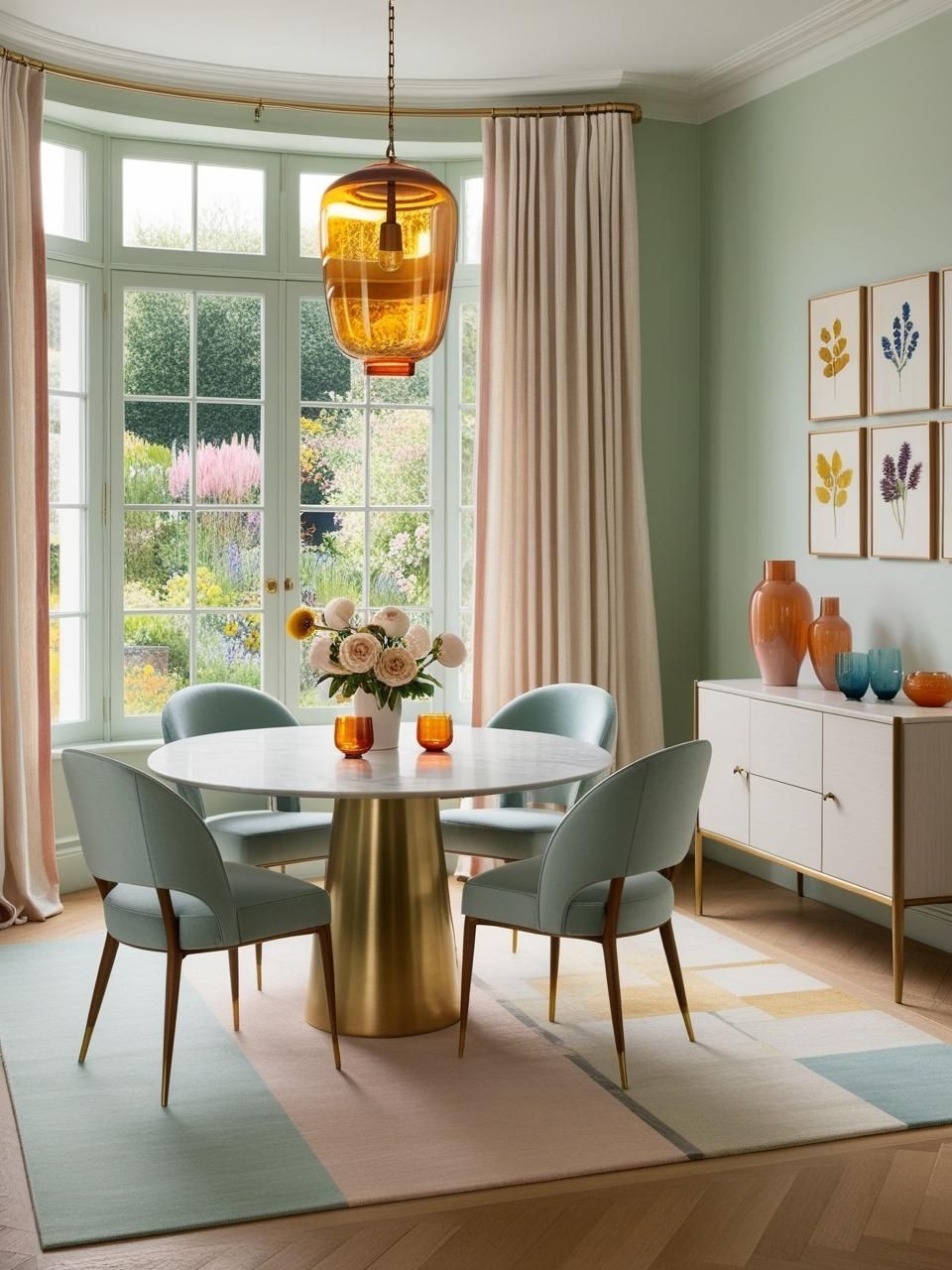
How Dopamine Core Design Affects Your Mood and Energy
Let’s cut through the design fluff and get to the real reason you’re considering dopamine core: your mental health deserves better than being trapped in a space that feels like a beige waiting room with motivational posters. Your environment literally rewires your brain, and dopamine core design is basically neurochemistry disguised as interior decorating.
Your Brain on Color: More Science Than You Bargained For
Remember how your mom insisted on painting your childhood bedroom that awful shade of blue because it was “calming”? Turns out, she wasn’t completely making that up. Color psychology is real, and dopamine core leans hard into this science instead of just throwing random trending colors at your walls.
Take green, for instance. It’s not just the color of money and that smoothie you pretend to enjoy. Studies show it actually lowers heart rates and blood pressure. That sage green accent wall isn’t just pretty – it’s literally slowing your roll after a day of chaos.
Turquoise works similar magic by balancing energizing blue with calming green, creating the visual equivalent of having just the right amount of coffee – alert but not anxious.
And soft yellow? That’s sunshine in color form, triggering vitamin D vibes even when you’ve been hiding from actual daylight for days. It’s happiness without the UV damage.
These aren’t just pretty colors – they’re mood medications you don’t need a prescription for.
The “Where Did I Put My Keys?” Solution
Here’s a design truth bomb: visual chaos creates mental chaos. That “creative clutter” you’ve been defending? It’s actually hijacking your brain’s processing power. Every object in your field of vision demands a tiny slice of your attention, leaving less for, you know, remembering important meetings or where you parked your car.
Dopamine core’s streamlined approach isn’t about becoming a minimalist robot – it’s about creating mental bandwidth. By intentionally reducing visual noise and organizing with purpose, you’re essentially giving your brain permission to focus on what actually matters.
The clarity comes from:
- Thoughtful furniture placement that creates natural flow (instead of an obstacle course)
- Strategic color zones that guide your eye where to look (and where to rest)
- Intentional negative space that gives your thoughts room to breathe
- Organized storage that keeps necessary items accessible but not visually distracting
It’s the difference between a brain that feels like 37 browser tabs open simultaneously and one that’s running just the essential programs.
Nature: The Original Mood Booster We Keep Forgetting About
Let’s acknowledge something ridiculous: we’ve built elaborate structures specifically to keep nature out, then spend thousands trying to bring elements of it back inside. Dopamine core design recognizes this absurdity and leans into biophilia – our innate need to connect with natural elements.
This isn’t just aesthetic preference; it’s hardwired into our primitive brains. Studies show that:
- Natural wood grain patterns reduce stress hormones (explaining why that IKEA veneer just doesn’t hit the same)
- Plants improve air quality while giving us something alive to care for besides ourselves
- Natural light regulates our circadian rhythms, improving sleep and mood
- Organic shapes and textures provide the sensory variation our brains evolved to process
The natural elements in dopamine core aren’t just trendy – they’re responding to a biological need that modern living often neglects. Your brain literally relaxes when it sees patterns and materials that feel evolutionarily familiar.
The “This Is Actually Mine” Factor
Here’s where dopamine core takes a sharp left turn from sterile design approaches: it insists that your space should actually reflect… wait for it… YOU. Revolutionary concept, I know.
Meaningful personalization creates a neurological connection to your environment that generic trendy decor simply can’t match. That art piece from your travels, the blanket your grandmother made, the weird sculpture you created in that pottery class – these items trigger memory pathways and emotional responses that mass-produced alternatives can’t touch.
This emotional connection:
- Creates a sense of security and belonging that’s neurologically calming
- Triggers positive memory associations that boost mood
- Reinforces identity and self-expression, reducing the cognitive dissonance of living in a space that doesn’t reflect who you are
- Establishes a sensory environment that feels uniquely tailored to your preferences
The dopamine core approach to personalization isn’t about displaying everything you’ve ever owned. It’s about curating the items that genuinely trigger positive emotional responses and giving them the space to shine.
The Real Talk About Dopamine Design Success
Let’s get brutally honest: dopamine core design works because it asks you to think about how your space makes you feel rather than just how it photographs. It requires actual self-awareness about what colors, textures, and arrangements genuinely uplift you – not what’s trending on social media.
The most successful dopamine core spaces aren’t the ones that follow rigid rules about which yellow is scientifically optimal. They’re the ones where the inhabitants have paid attention to their emotional responses and designed accordingly. Your perfect mood-boosting blue might be someone else’s anxiety color, and that’s entirely the point.
The dopamine difference is that it puts your genuine well-being at the center of design decisions rather than external validation. And in a world where we’re increasingly designing our homes as background sets for video calls and social media content, that might be the most revolutionary approach of all.
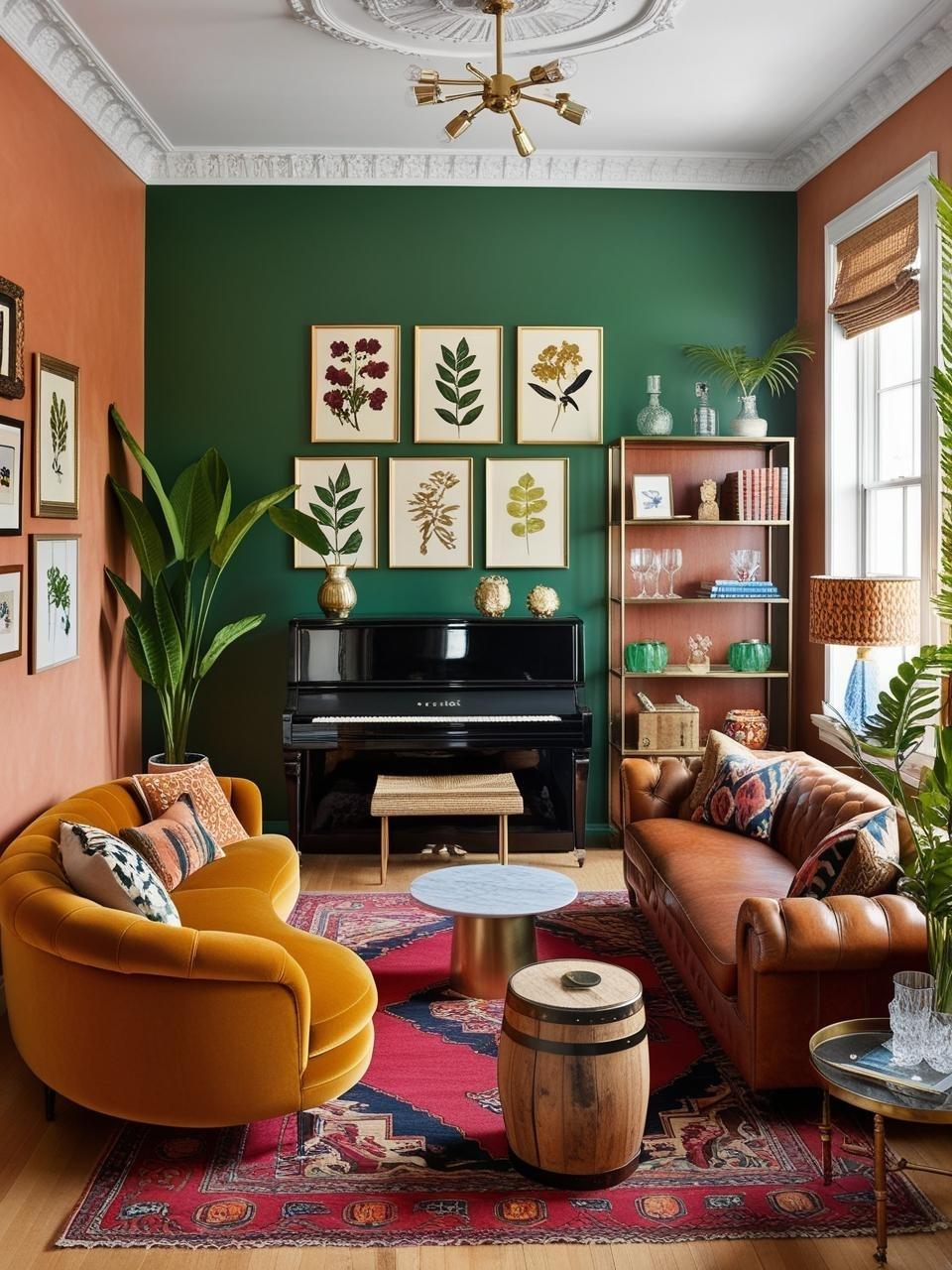
How Maximalism Affects Your Mood and Energy
Let’s get real about maximalism. That kaleidoscopic, pattern-on-pattern Instagram feed you’ve been scrolling through isn’t just visually stimulating – it’s basically a legal way to mainline dopamine directly into your eyeballs. And in a world of beige-on-beige minimalism (yawn), maximalism is the design equivalent of deciding life’s too short for sensible shoes.
Your Brain on Visual Stimulation: The Legal High You Never Knew You Needed
Remember how as a kid you’d spin in circles just to feel something? Maximalism delivers that same giddy disorientation, but without the motion sickness. The science is pretty straightforward: your brain is wired to respond to visual stimulation. Novel inputs create neural fireworks that push your mental state from “meh” to “more, please!”
When you surround yourself with:
- Bold colors that refuse to apologize for their existence
- Patterns that keep your eye dancing from one spot to another
- Textures that beg to be touched (go ahead, stroke that velvet pillow, I won’t judge)
You’re essentially creating an environment that refuses to let your energy levels flatline. It’s like having coffee with your eyes.
The maximalist home is the antidote to the energy-vampire spaces we navigate daily – those fluorescent-lit offices and identical coffee chains where inspiration goes to die. Your zebra-print armchair paired with that floral wallpaper? That’s not decorating; that’s rebellion.
The “This Is Definitely Me” Effect
Let’s be brutally honest – that neutral, sparse aesthetic everyone’s been chasing? It’s the design equivalent of a LinkedIn profile. Safe, professional, and about as personally revealing as a corporate headshot.
Maximalism says, “I contain multitudes, and I’m not afraid to show them.” In a maximalist space, your weird collection of vintage salt and pepper shakers isn’t clutter – it’s a conversation piece. Your mismatched furniture isn’t waiting for a matching set – it’s a deliberate celebration of how people actually accumulate things they love over time.
This authenticity creates a profound psychological effect:
- Relief from the pressure to present a curated, perfect version of yourself
- Permission to acknowledge the contradictions in your own taste
- Validation that your quirks are worth celebrating, not concealing
- Freedom from the tyranny of trends that never quite feel like “you”
The energy shift is remarkable – there’s a lightness that comes with abandoning the pretense that you’re a person who only loves three colors and exclusively buys objects that “spark joy” while fitting a rigid aesthetic framework.
Controlled Chaos: The Method Behind the Madness
Here’s the dirty little secret maximalists don’t advertise enough: underneath that glorious visual feast is actually a highly intentional organizational system. True maximalism isn’t hoarding – it’s curating abundance.
The organized chaos works because:
- Items are grouped into collections rather than scattered randomly
- Colors repeat throughout the space, creating cohesion even amid variety
- There’s a rhythm to the madness – patterns that scale from small to large
- Negative space exists strategically to give the eye resting points
This orchestrated abundance stimulates without overwhelming because it follows invisible rules. It’s like jazz – it looks improvisational but actually requires deep understanding of structure.
The mood effect is similar to being at a well-planned party where there’s always something interesting to look at or talk about, but you don’t feel overwhelmed because there’s an underlying order keeping the energy flowing in the right direction.
The Playground Principle: Design That Doesn’t Take Itself Too Seriously
Let’s face an uncomfortable truth: we’ve somehow convinced ourselves that “grown-up” spaces should be serious, subdued, and devoid of whimsy. Maximalism throws this nonsense out the window and replaces it with the radical notion that your home should actually make you smile.
The playfulness comes from:
- Unexpected combinations that create visual jokes (like that dignified portrait next to your neon sign)
- Color pairings that feel slightly mischievous (mustard and pink? why not!)
- Objects that serve no purpose beyond making you happy
- Spaces that evolve organically rather than adhering to rigid “after” photos
This playful atmosphere creates a crucial psychological shift – it reminds you that your home isn’t a museum or a showroom. It’s a living space where experiments are encouraged and perfection is boring.
The energy impact is substantial – environments that make us smile actually reduce stress hormones and increase those feel-good neurotransmitters. Your leopard print ottoman isn’t just decor; it’s basically medicine.
The Truth About Living Maximally
Let’s get uncomfortably honest: maximalism isn’t for the faint of heart or the weak of conviction. It requires confidence to resist that voice (often your mother’s) saying “that’s a bit much, don’t you think?” It demands the courage to risk occasionally getting it wrong.
But the mood payoff is extraordinary – a space that feels alive, that grows with you, that reflects the beautiful complexity of being human rather than the Instagram-approved version of existence.
The maximalist home isn’t just decorated – it’s animated. It has plot twists and character development. It contains visual surprises that reveal themselves over time rather than being immediately digestible in a single glance.
In a world increasingly dominated by algorithm-approved aesthetics, there’s something profoundly energizing about spaces that refuse standardization and embrace the beautiful chaos of individual expression. Perhaps that’s the greatest mood benefit of all – the simple joy of being unapologetically, gloriously yourself.
Unlock Designer-Perfect Colors in Minutes
Browse my curated collection of interior color palettes—tailored for today’s most loved design styles.

Which Design Style Is Right for You?
Let’s cut through the design jargon and get uncomfortably honest about which of these styles might actually work for your real life – not the Instagram fantasy version where you never spill coffee or accumulate random Amazon boxes.
The “Know Thyself” Design Assessment
Before you start pinning dopamine core color palettes or maximal pattern combinations, let’s have an intervention about something crucial: your actual personality. Not who you aspire to be after reading that self-improvement book, but who you are on a random Tuesday when nobody’s watching.
Ask yourself:
- Do you find decision-making exhausting or exhilarating?
- Is your idea of relaxation a clear surface or a visual feast?
- Do you prefer one perfect thing or many interesting options?
- When stressed, do you clean or create?
Your answers reveal more about your design compatibility than any trend forecast ever could.
Dopamine Core: For The Thoughtful Curator
You Might Be a Dopamine Core Person If…
You’re the friend who can spend 40 minutes selecting the perfect birthday card because “it has to feel right.” You’ve been known to rearrange furniture just to improve the room’s energy flow. The idea of intentional living isn’t just a buzzword to you – it’s practically your religion.
The Lifestyle Match
Dopamine core design works brilliantly for:
- The easily overwhelmed (no shame – your nervous system is just more sensitive than others)
- Busy professionals who need their home to be a genuine sanctuary, not another source of stimulation
- Anyone who’s ever uttered the phrase “I just need to think clearly” while frantically decluttering
- People who appreciate quality over quantity and would rather save for one perfect lamp than impulse-buy three mediocre ones
The Reality Check
Let’s be brutally honest about dopamine core living. It requires a level of self-discipline that many of us aspire to but don’t actually possess. Those serene, uplifting spaces don’t maintain themselves. They demand constant curation and the willpower to say “no” to impulse purchases that don’t serve the greater design vision.
If you struggle with decision fatigue or find yourself easily swayed by trends, dopamine core might become yet another perfectionist standard you fail to meet. And nobody needs more of those.
Maximalism: For The Enthusiastic Collector
You Might Be a Maximalist If…
Your friends describe your taste as “a lot” – and you take it as a compliment. You’ve never met a flea market you didn’t like. Your idea of a perfect Saturday involves hunting for that one weird thing that nobody else would appreciate but will make your heart sing when you see it on your shelf.
The Lifestyle Match
Maximalism thrives with:
- Creative types who process information through visual and tactile stimulation
- People whose memories are tied to physical objects and collections
- Anyone who’s ever been told they have “too much personality” (as if that’s possible)
- Those who genuinely enjoy the hunt and the story behind each acquisition
- Individuals who feel constrained by design rules and prefer guidelines that can be creatively interpreted
The Reality Check
The dirty truth about maximalism? It requires more organization and maintenance than its carefree appearance suggests. Without systems and boundaries, it quickly deteriorates from “curated abundance” to “where did I put my keys and why is there a ceramic parrot on my tax forms?”
Maximalism also demands confidence. You’ll need to develop immunity to well-meaning friends asking if you’re “sure about that color combination” or suggesting maybe you have “enough pillows now.” (Spoiler: there’s no such thing as enough pillows in maximalism.)
The Personality Factor: Beyond Aesthetics
The design style that actually works for you has less to do with color theory and more to do with how your brain processes information and how you naturally interact with your environment.
Dopamine Core Personalities Typically:
- Find deep satisfaction in order and intentionality
- Experience genuine mood lifts from specific colors and natural elements
- Prefer depth over breadth in their interests and collections
- Feel most creative and productive in spaces with visual clarity
- Value the emotional quality of fewer, more meaningful possessions
Maximalist Personalities Often:
- Thrive on variety and visual stimulation
- Process ideas through physical objects and visual connections
- Express themselves through layering and unexpected combinations
- Feel most authentic when surrounded by evidence of their varied interests
- Experience joy in abundance rather than restriction
The Practical Reality Test
Instead of getting lost in design terminology, try this simple test: sit in your current living space and notice what makes you feel tense versus what makes you feel relaxed. For some people, a cluttered bookshelf creates anxiety. For others, it feels like being surrounded by old friends.
There’s no moral superiority in either approach – just different neurological responses to environmental stimuli. Your perfect design style is the one that supports your mental well-being, not the one that photographs best for social media.
And here’s the liberating truth: you don’t have to choose just one forever. Your needs might change seasonally or as you move through different life phases. The boldest design choice might be refusing to lock yourself into a single aesthetic identity at all.
The right design style isn’t the trendiest or the most photogenic – it’s the one that makes you exhale when you walk through your door and think, “This feels like me.” Everything else is just decoration.

How to Combine Elements of Dopamine Core and Maximalism
Let’s address the elephant in the design room: you want it all, don’t you? You crave the serene, mood-boosting energy of dopamine core but can’t quite let go of your collection of vintage concert posters and that borderline ridiculous peacock chair you impulse-bought. The good news? You don’t actually have to choose. The better news? The most interesting spaces have always refused to fit neatly into one design box.
The “Have Your Cake and Display It Too” Approach
Here’s the design world’s best-kept secret: dopamine core and maximalism aren’t actually sworn enemies engaged in a décor death match. They’re more like the introverted friend and extroverted friend who, when properly introduced, create the perfect social balance.
The trick is understanding that these styles share a fundamental goal: creating spaces that make you feel something. Where they differ is in their execution, not their intention.
The 70/30 Rule That Actually Works
Start with a dopamine core foundation (about 70% of your design decisions) that creates the consistent, mood-enhancing base. Then add maximalist moments (the remaining 30%) that provide the visual excitement without tipping into chaos.
This means:
- Walls in those scientifically-backed mood-boosting colors rather than a riot of competing patterns
- Furniture with clean lines but in richly saturated colors instead of beige-on-beige monotony
- Open space for eyes to rest, punctuated by concentrated areas of visual interest
- Storage solutions that hide the truly mundane items while displaying the collections that bring genuine joy
Instead of a maximalist explosion in every corner, you’re creating intentional maximalist moments within a dopamine-friendly framework. Think of it as giving your bold choices the spotlight they deserve rather than forcing them to compete for attention.
Personal Treasures: Display Don’t Drown
Let’s be brutally honest – nobody cares about your collection of vintage thimbles except you. But that’s exactly what makes those treasures worth displaying! Personal items are the difference between a designed space and a home with actual personality.
The hybrid approach gives you permission to showcase these items without letting them visually hijack your entire home:
- Create “story stations” where related items can live together rather than scattering collections across every surface
- Use consistent display methods (similar frames, unified shelving) to give diverse items a sense of cohesion
- Establish boundaries for collections – one wall for gallery art rather than every vertical surface
- Rotate seasonal or special items instead of displaying everything simultaneously
This targeted approach preserves the dopamine core’s clean breathing room while honoring the maximalist joy of meaningful objects. Your collection gets the respect it deserves without your home looking like a questionable antique store.
Texture: The Secret Weapon of Design Diplomacy
If dopamine core and maximalism were to agree on anything, it would be the importance of texture. Both styles understand that a flat, visual-only approach to design is missing the full sensory experience of a space. This shared value creates the perfect bridge between these seemingly opposite approaches.
The hybrid strategy:
- Layer complementary textures rather than competing patterns
- Use textural elements in dopamine-friendly colors to add depth without visual chaos
- Incorporate natural textures (wood, stone, plant materials) that satisfy both the biophilic needs of dopamine design and the sensory richness of maximalism
- Focus on quality tactile experiences over quantity
That chunky knit throw in your dopamine core color palette? The smooth ceramics in coordinated hues? They’re creating maximalist-approved sensory variation without sacrificing the visual calm that helps your brain regulate. It’s having your design cake and eating it too.
The Art of Dopamine-Friendly Maximalism
Let’s talk about the elephant in the room: your art collection that threatens to consume every vertical surface in your home. The urge to display every piece you love is peak maximalism, but the visual overwhelm is decidedly not dopamine-friendly.
The hybrid solution:
- Create a gallery wall that contains your artistic exuberance within clear boundaries
- Use consistent framing to unify diverse art styles
- Arrange art based on color harmony with your dopamine core palette
- Give important pieces breathing room rather than cramming every inch
This approach preserves the maximalist joy of abundance while maintaining the dopamine core principle of intentional visual harmony. Your art collection becomes a curated feature rather than visual background noise.
The Accent Color Revolution
Color is where these styles seem most at odds, with dopamine core favoring strategic, science-backed choices and maximalism embracing bold combinations. The secret to harmonizing them? Understanding the power of the accent.
The integrated approach:
- Build your foundation with 2-3 core colors that science supports as mood-enhancing
- Add 1-2 bold accent colors that satisfy the maximalist craving for visual excitement
- Use the 60-30-10 rule (60% primary color, 30% secondary color, 10% accent) to create structure
- Keep bold patterns contained to specific zones rather than competing across the space
This color strategy creates the dopamine-friendly consistency your brain craves while delivering the maximalist punch that keeps your space from feeling sterile. It’s balanced stimulation rather than visual overwhelm.
The Reality Check for Hybrid Designers
Here’s the uncomfortable truth: the dopamine core/maximalist hybrid requires more thoughtfulness than either approach alone. You can’t just throw everything together and call it “eclectic.” The magic happens in the editing – knowing when to embrace restraint and when to celebrate abundance.
But here’s the payoff: a space that genuinely reflects the complex, contradictory human being that you are. Because let’s be honest – none of us fit perfectly into a single design category. We contain multitudes, and our homes should too.
The most successful spaces have always been those that reflect authentic personality rather than rigid adherence to design rules. By thoughtfully combining the neurological benefits of dopamine core with the expressive joy of maximalism, you’re not compromising – you’re creating something more interesting than either could achieve alone.
And in a world of increasingly formulaic interiors, that might be the most refreshing design choice of all.
Curated Wall Art for Elegant Homes
Bring softness, texture, and intention into your home with digital wall art inspired by wabi-sabi, abstract forms, and muted watercolors. Every piece is crafted to create stillness and beauty—whether you’re styling a gallery wall or a minimalist nook.
Conclusion
Let’s be honest with ourselves for a minute. Most of us don’t fit neatly into a single design box—we’re more like that junk drawer in your kitchen that somehow contains both meticulous organization tools AND half-empty hot sauce packets.
Both dopamine core and maximalism are really just fancy labels for the eternal design question: “How much is too much?” And the brutally honest answer? It depends entirely on your personal neurological wiring. That gallery wall making your friend anxious might be the exact visual stimulation your brain craves after a day of spreadsheets.
The magic happens when you stop treating design styles like rigid religions and start seeing them as tools in your mental wellness toolkit. Maybe your bedroom needs that dopamine core calm while your living room thrives with maximalist energy. Perhaps your mood-boosting color palette becomes the framework for displaying your gloriously random collections.
The most authentic spaces have always been the ones that prioritize how you feel over how they photograph. Your home isn’t a magazine spread or a social media backdrop—it’s the container for your actual, messy life.
So go ahead and paint that wall the perfect shade of sunshine yellow if it genuinely makes you happy. Display your weird tchotchke collection if it brings you joy. Create spaces with breathing room if that’s what your brain needs to decompress.
The only design failure is creating a space that looks right but feels wrong when you actually live in it.
Whether you lean toward the strategic calm of dopamine core or the expressive abundance of maximalism (or some beautiful hybrid of both), the true measure of design success is simple: Does coming home feel like exhaling? Does your space support the version of yourself you want to be?
If the answer is yes, you’ve nailed it—no matter what label the design world might try to slap on your style.

